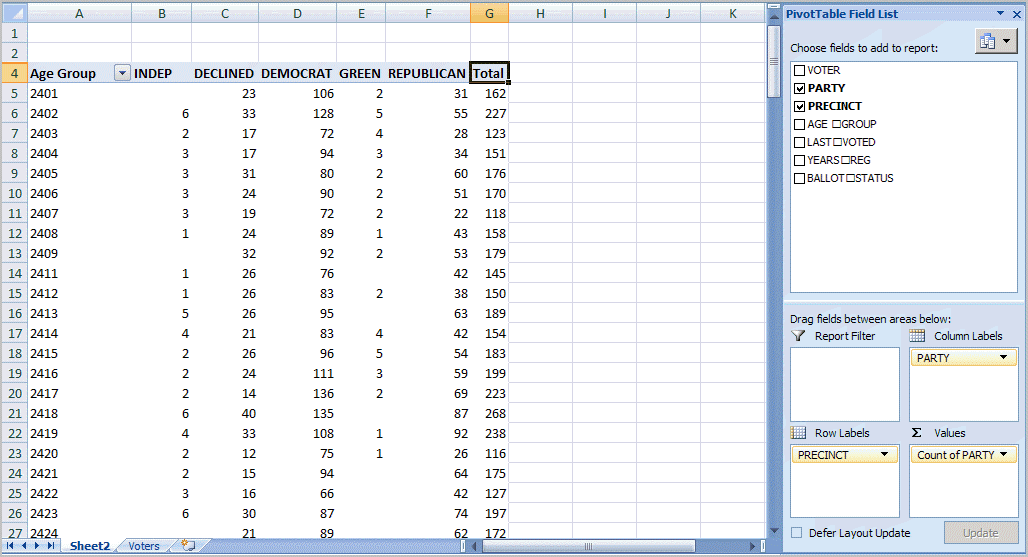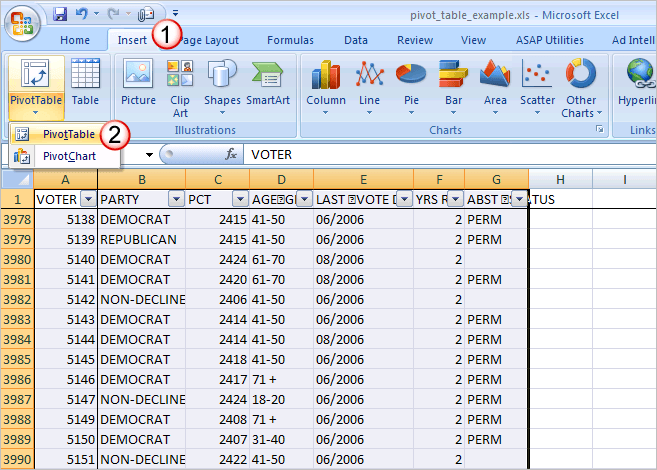Getting the best out of excel can sometimes be daunting. Known for its functions, formulas, and data analysis capacities, it might leave you wondering how you can use Excel as a practical productivity tool in your life, without the steep learning curve.
You can streamline your organization skills using the massive range of Excel templates: money, budgeting, payslips, project management, and much more can be efficiently managed, freeing up time for…well, more awesome things.
You can download well balanced, auto-updating Excel templates that you, or anyone you share your work with, can use straight away. It’ll be EXCEL-LENT!
Budget Templates
I’ve included a few budget templates as they come in numerous flavors. I’m still relatively new to budgeting. Having been quite the carefree student, I suddenly found myself a family-man, so learning to account for each penny quickly became a must. I have some of these Excel budget templates to thank.
Family Budget Planner
I went from party-animal student, to student with partner-expecting-child, to terrified-student-father in a matter of months (let’s assume it was 9…). This little template helped me no end, and it’ll certainly help you, too. It’s thorough, well planned, and has a number of savings and planning functions.
It isn’t limited to Excel either. Once downloaded, this template works perfectly well in Open Office, LibreOffice, and Google Sheets – all perfect for really squeezing that budget, if propriety software has its own column.
Money Management
A big part of understanding your budget is effective money management: where it’s coming from, where it’s going, your debtors, your creditors, and everything else you can think of. When you have so many different sources coming into and out of multiple checking accounts, plus a mortgage, plus your business accounts, you can quickly lose track of incomings and outgoings. Unless you use a handy spreadsheet like this:
Event Budget
I’m planning my wedding at this very moment. Huhrah /s. At the moment, the immense excitement is being seriously overawed by the minute finance management my partner and I seem to spend most of our waking time talking about. We’ve kept right on top of things using a dedicated Event Budget planner – and so far it’s helped us come in way under-budget.
We’ve used it for our wedding planning, but you can use it for your fundraiser, your social event, or if you’re throwing a big ol’ shindig.
Fundraiser Thermometer Template
Visualizing your progress toward a finance goal can provide the extra impetus to get you over the line – and further! Some people are just visually inspired, whilst others find visualizing a numerical amount makes it easier to interpret. Give this one a look:
It isn’t the flashiest, but you can add On Track Targets, calculate donations for specific period, or donations for a single day.
Maintenance Schedule Template
Home ownership comes with many additional tasks, aside from the massive repayments. You can no longer call your landlady and cry down the phone because the gas boiler is broken and you really, really wanted a hot bath.
No, you’ll need to keep up with regular home maintenance or else it’ll literally start falling apart. Keep abreast of what needs doing, and when, with a handy home maintenance template. In this case, I’ve used an inbuilt Excel template as it has everything I need, but you can search for ones that suit your home repair schedule.
Database Template
Much like the budget templates, I’ve included a few database templates as they come in so many flavors. You might have to try a few before you find one that fits your data processing requirements, be that home or business use.
CRM
You can use Excel as an effective CRM system for your business. Streamline communications with existing and potential clientele to gain a competitive edge, using a free template. As they say, take care of the little things, and the big things will take care of themselves.
Inventory Management
Running a small business – or a large one – requires organization. If you’ve a warehouse full of stock, you need to keep track of each coming and going, ensuring that each day your database is updated. It doesn’t take Warren Buffet to understand stock management. This is an inbuilt Excel template, but there are plenty more available across the web.
Payroll Management
Managing your employees is essential – they’d be mighty disappointed if they realized all of their financials were written on a napkin, stashed underneath that snazzy Home Depot paperweight. Use a preformatted template to keep track of your employees – their total and hourly rates, their SS numbers, their over-time status, and 401(K) contributions.
Planning Templates
Are you a project manager? Or builder? Or simply work in an office, with deadlines? Let’s go further: do you actively plan aspects of your live to ensure there aren’t any massive blips? You’ll love these Excel planning templates.
Gantt Chart
A Gantt Chart template is essential for any project you are tasked with managing. Ever tried managing without one? I cannot fathom how you succeeded, if indeed you did. Gantt Charts are another excellent time visualization tool, helping you plan each aspect of your project in correlation. Use one – I guarantee it will help.
The best part is the automation. Add a detail, or edit the timeline, and your template will automatically update each correlating detail.
Continuous Monthly Calendar
I’ve only just started using a continuous monthly calendar, but it has quickly made a few differences to my work flow. Along with the budgeting, getting to grips with a real-life work flow following the many years of university was a challenge, but something I’ve steadily improved on over the years. Little tools like this can make all the difference if you’ve several different sources of work running concurrently, with smatterings of deadlines along with more work appearing.
Weekly, Bi-Weekly and Monthly Timesheets
Keep abreast of your hours worked. Even if you have a login system in the workplace, you should be tracking your hours. If there are any discrepancies or shortcomings in your paycheck, you’ve tracked each and every hour worked. It also helps you plan your incomings and outgoings a little better, and understand the value in time.
Other Planning Templates
It isn’t always about business. The inbuilt Excel templates feature gardening schedules for the green fingered, family meal planning for the waste conscious, and detailed family travel itineraries for those efficient fun-having parents. Scroll through the Excel template repository, or search using “Planning” to bring up a number of relevant results.
Excel Template Sources
If you want to continue your productivity drive, check out these Excel template sources:
- Spreadsheet123
- Vertex42
- Office Store
- Excel Templates
- Chandoo
Once you start managing more of your life with Excel templates, you’ll have so much time for other activities, you’ll have to design a new template to keep track of your new-found time-wealth. And hopefully some monetary wealth, too.
Do you use templates? What’s your favorite time-saver? Are you a meticulous planner? Let us know below!
 Looking at the first 20 voter records, you can see the content is boring. In this format, the key question it answers is how many voters exist in all the precincts.
Using Excel pivot tables, you can organize and group the same data in ways that start to answer questions such as:
Looking at the first 20 voter records, you can see the content is boring. In this format, the key question it answers is how many voters exist in all the precincts.
Using Excel pivot tables, you can organize and group the same data in ways that start to answer questions such as:
 Using a pivot table, I can continue to slice the information by selecting more fields from the PivotTable Field List. For example, I can take the same data and segment by voter age group.
Using a pivot table, I can continue to slice the information by selecting more fields from the PivotTable Field List. For example, I can take the same data and segment by voter age group.




 The Create PivotTable dialog appears.
The Create PivotTable dialog appears.











 Each age group is broken out and indented by precinct. At this stage, you might also be thinking of usability. As with a regular spreadsheet, you may manipulate the fields. For example, you might want to rename “Grand Total” to “Total” or even collapse the age values for one or more precincts. You can also hide or show rows and columns. These features work the same way as a regular spreadsheet.
One area that is different is the pivot table has its own options. You can use these options by right-clicking a cell within and selecting PivotTable Options… For example, you might only want Grand Totals for columns and not rows.
There are also ways to filter the data using the controls next to Row Labels or Column labels on the pivot table. You may also drag fields to the Report Filter quadrant.
Each age group is broken out and indented by precinct. At this stage, you might also be thinking of usability. As with a regular spreadsheet, you may manipulate the fields. For example, you might want to rename “Grand Total” to “Total” or even collapse the age values for one or more precincts. You can also hide or show rows and columns. These features work the same way as a regular spreadsheet.
One area that is different is the pivot table has its own options. You can use these options by right-clicking a cell within and selecting PivotTable Options… For example, you might only want Grand Totals for columns and not rows.
There are also ways to filter the data using the controls next to Row Labels or Column labels on the pivot table. You may also drag fields to the Report Filter quadrant.



